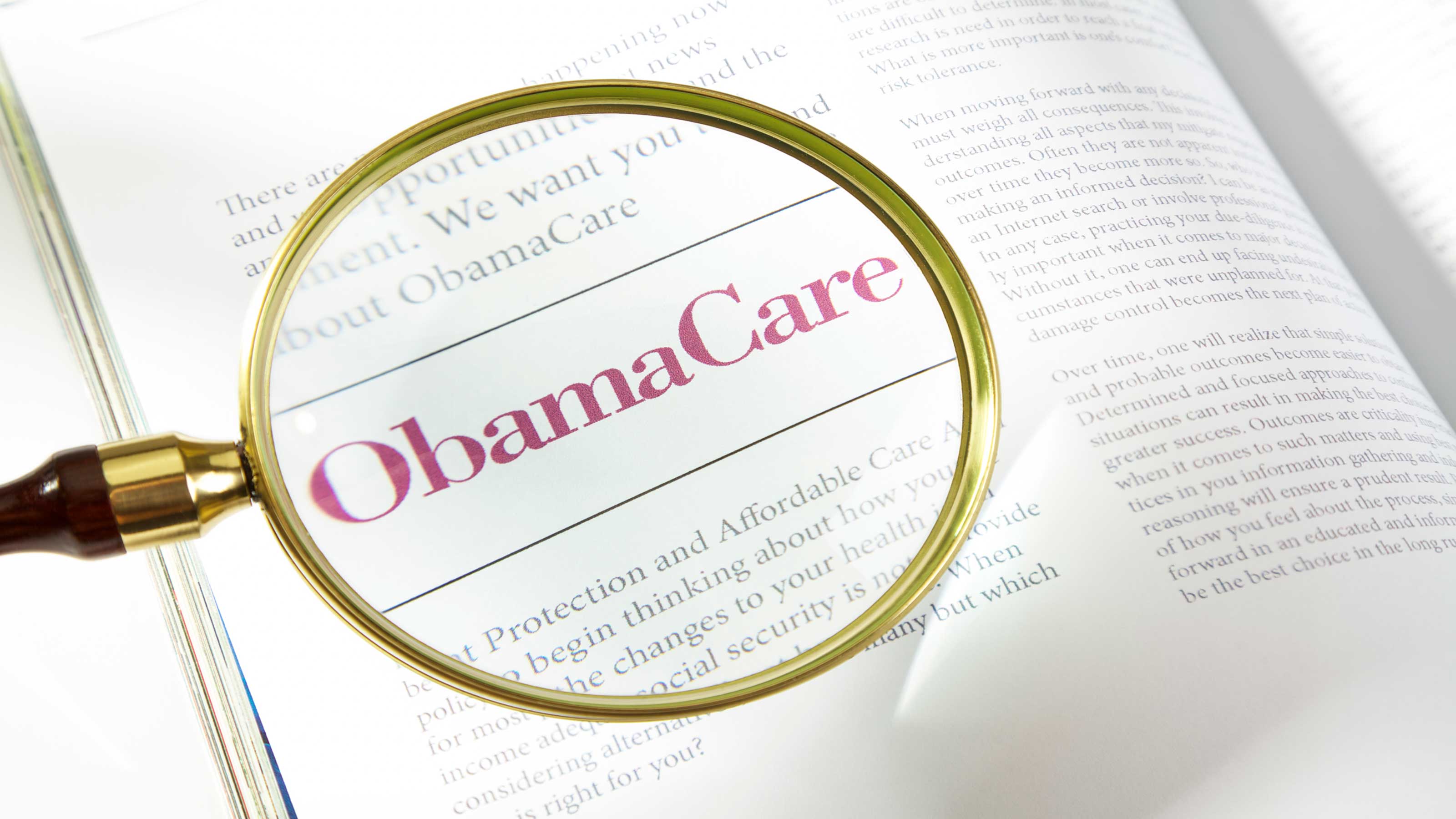Five Reasons Your Healthcare Costs Will Ease: Kiplinger Economic Forecasts
From technical advancements to cheaper drugs, healthcare cost relief is coming.

To help you understand what is going on in the healthcare industry and what we expect to happen in the future, our highly experienced Kiplinger Letter team will keep you abreast of the latest developments and forecasts (Get a free issue of The Kiplinger Letter or subscribe). You'll get all the latest news first by subscribing, but we will publish many (but not all) of the forecasts a few days afterward online. Here’s the latest...
If you’re worried about healthcare costs, for either your business or your personal situation, a raft of money-saving shifts are coming to the healthcare sector, promising to ease the strain on overburdened hospitals, while reducing expenses for patients and employers, who foot a lot of the bill.
One key to controlling future medical costs: moving more care to outpatient settings, meaning the patient goes home after a procedure instead of spending one or more nights recuperating in the hospital. It’s probably what most people want to begin with, and it can save a bundle vs a long stay in the hospital, especially with hospitals short-staffed.

Sign up for Kiplinger’s Free E-Newsletters
Profit and prosper with the best of expert advice on investing, taxes, retirement, personal finance and more - straight to your e-mail.
Profit and prosper with the best of expert advice - straight to your e-mail.
Outpatient care will grow 18% by 2033, well ahead of the expected 2% rise in inpatient care. More surgeries will become outpatient as surgical techniques and post-surgery treatment are refined, reducing the need for hospitalization. More joint replacements, for instance, with patients going home to begin recovery and physical therapy.
Other conditions for which treatment will be offered much more often in outpatient settings are dementia, cancer, cardiovascular problems like chronic heart failure, diabetes and lung disease. Telemedicine is also poised to mushroom after catching on in the pandemic. A decade from now, remote visits will account for 26% of all appointments with doctors.
Advances in medical technology also promise to curb healthcare costs. Laparoscopic and other “keyhole” surgeries are being used more widely, enabling faster, less expensive recoveries. The growing use of surgical robots and improvements in robotics are expanding the array of minimally invasive surgeries.
Cheaper alternatives to blockbuster drugs should provide more cost relief. Biosimilars, which closely mimic original drugs, are proliferating. For example, a biosimilar version of AbbVie’s blockbuster arthritis treatment Humira hit the market earlier this year at a lower cost. Other biosimilars targeting popular drugs are coming. Eventually, they could lower prescription costs similarly to how generics have done.
The downside of better medical treatments: more people tend to use them, driving up overall health spending. The growing array of obesity drugs, for example, could improve the lives of millions and cut medical costs associated with obesity. But they figure to be very popular and will fuel a burst of additional drug spending.
There’s more competition coming to the healthcare market, too. Basic care is especially ripe for cost containment as new players offer inexpensive clinics to treat routine, nonemergency issues. Amazon Clinic, for instance, is now operating in all 50 states, offering low, fixed prices for 30 common conditions. Walmart Health operates in five states and treats a range of medical, behavioral and dental issues
This forecast first appeared in The Kiplinger Letter, which has been running since 1923 and is a collection of concise weekly forecasts on business and economic trends, as well as what to expect from Washington, to help you understand what’s coming up to make the most of your investments and your money. Subscribe to The Kiplinger Letter.
Related stories
Profit and prosper with the best of Kiplinger's advice on investing, taxes, retirement, personal finance and much more. Delivered daily. Enter your email in the box and click Sign Me Up.

David is both staff economist and reporter for The Kiplinger Letter, overseeing Kiplinger forecasts for the U.S. and world economies. Previously, he was senior principal economist in the Center for Forecasting and Modeling at IHS/GlobalInsight, and an economist in the Chief Economist's Office of the U.S. Department of Commerce. David has co-written weekly reports on economic conditions since 1992, and has forecasted GDP and its components since 1995, beating the Blue Chip Indicators forecasts two-thirds of the time. David is a Certified Business Economist as recognized by the National Association for Business Economics. He has two master's degrees and is ABD in economics from the University of North Carolina at Chapel Hill.
-
 Mom needs a nursing home. Should I spend down her assets so she qualifies for Medicaid?
Mom needs a nursing home. Should I spend down her assets so she qualifies for Medicaid?We asked expert financial advisers for their advice.
-
 Financial Fact vs Fiction: Why Your 'Magic Number' Isn't Actually Magical
Financial Fact vs Fiction: Why Your 'Magic Number' Isn't Actually MagicalDo you think you're diversified if you're invested in the S&P 500 and Nasdaq? Do you think your tax rate will fall in retirement? Think again — and read on for other myths that could be leading you astray.
-
 AI’s Rapid Rise Sparks New Cyber Threats
AI’s Rapid Rise Sparks New Cyber ThreatsThe Kiplinger Letter Cybersecurity professionals are racing to ward off AI threats while also using AI tools to shore up defenses.
-
 Blue Collar Workers Add AI to Their Toolboxes
Blue Collar Workers Add AI to Their ToolboxesThe Kiplinger Letter AI can’t fix a leak or install lighting, but more and more tradespeople are adopting artificial intelligence for back-office work and other tasks.
-
 Tax Rule Change Could See Millions Lose Health Insurance
Tax Rule Change Could See Millions Lose Health InsuranceThe Kiplinger Tax Letter If current rules for the health premium tax credit (PTC), a popular Obamacare subsidy, aren't extended, 3.7 million people could lose their health insurance.
-
 Will State Laws Hurt AI’s Future?
Will State Laws Hurt AI’s Future?The Kiplinger Letter Republicans in Congress are considering a moratorium on state AI laws. But it’s likely a growing patchwork of state AI regulations will be here for a while.
-
 Travel Trends You Can Expect This Summer
Travel Trends You Can Expect This SummerThe Kiplinger Letter Domestic trips will trump foreign travel amid economic uncertainties, though some costs are down.
-
 AI Goes To School
AI Goes To SchoolThe Kiplinger Letter Artificial intelligence is rapidly heading to K-12 classrooms nationwide. Expect tech companies to cash in on the fast-emerging trend.
-
 The New AI Agents Will Tackle Your To-Do List
The New AI Agents Will Tackle Your To-Do ListThe Kiplinger Letter Autonomous AI agents “see” your computer screen, then complete a task, from buying a concert ticket to organizing email. This opens up a world of possibilities.
-
 AI’s Medical Revolution
AI’s Medical RevolutionThe Kiplinger Letter Medicine is a field ripe for finding both exciting and practical uses for AI. The tech is already being used by doctors and researchers.